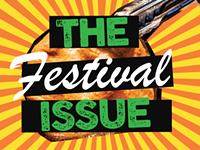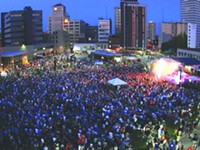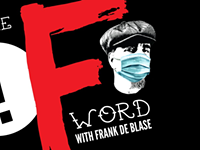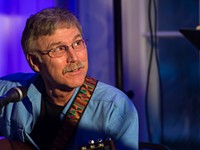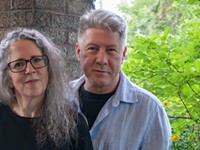Tuesday, June 21, 2016
Jazz 101
Ron Netsky offers a crash course into the world of jazz
Posted By Ron Netsky on Tue, Jun 21, 2016 at 4:00 AM
Now in its 15th year, the Xerox Rochester International Jazz Festival has become the most highly anticipated yearly musical orgy in Upstate New York. We have nine days to indulge in every kind of music, from free street concerts by national acts to $100-plus seats at the ritzy Kodak Hall.
During the course of the larger event, there are actually several festivals going on: the avant-garde festival at the Lutheran Church; the get-up-and-dance festival in the Big Tent; and the pop festival on the outdoor stages. But what about the music at the very core, the music in the XRIJF's name: jazz?
Even hip comedians like Bill Maher make jokes about the ability of jazz to put people to sleep, but if you learn to appreciate it, jazz is about as fascinating as music can get.
The are similarities between jazz and classical music. Composers like Beethoven and Mozart surely improvised during the composing process. When they found a great melody they wrote it down, but when performing at the piano, Beethoven and others were known for playing improvised cadenzas.
Jazz artists dare to improvise right on the stage, right in front of an audience. They find great melodies all the time but they don't write them down; they just move on. In fact, legend has it that when someone transcribed a John Coltrane solo created in the moment, and later, put the written music in front of Coltrane, he couldn't play it.
The similarities continue in the rock world. Artists like the Doors, known for long and imaginative solos on guitar and organ, acknowledged that they were influenced by the modal chord structures and improvisation of jazz players like Coltrane, Miles Davis, and others. When Prince played his famous guitar solo on "While My Guitar Gently Weeps" at the Rock and Roll Hall of Fame, he was improvising over George Harrison's chords.
Jazz players are every bit as virtuosic as classical pianist Evgeny Kissin and rock guitarist Jimmy Page. In fact, they seem to weave their solos so beautifully, you might think it's easy. There are the rare Mozart-level geniuses -- like Joey Alexander, the 12-year-old wunderkind who dazzled us at last year's festival and will open for Chick Corea at this year's -- but most jazz players not only know their theory inside and out, they practice for countless hours to achieve mastery.
Up on that stage all of that knowledge and practice is put to work as the piece unfolds. There's usually a head -- a melody to start things off and maybe end with -- but the middle section is filled with chorus after chorus of improvisation. Even seasoned players want to explore new territories in their solos. And, while it might not always equal the cut-throat sessions of a 1950's after-hours jazz club, there is still a healthy competition between players.
Here's how saxophone great Sonny Rollins described soloing to me when he played at an earlier festival: "I learn the melody," Rollins says. "Then I also learn the chords, the harmonic structure of the song. I learn everything about the words, the way the song goes. Then I forget it. You never really forget it, but what I'm trying to say is you don't really think about it because in the art of improvisation there's no time to think. Things are happening too fast.
"Sometimes when you start playing, you may be distracted by the audience -- there's a pretty girl in the front row or something. But when I get into it everything goes and you are sort of in a trance-like state. This is the state where one wants to be. This is where you want to let the music play itself."
In the spirit of an improvised solo, jazz has never stood still. To vastly oversimplify it, the ragtime of the early 20th century gave way to boogie-woogie and other styles. By the 1930's, swing was king only to be supplanted by bebop in the 1940's. Cool jazz and hard bop ruled the 1950's while the avant-garde and soul jazz emerged in the 1960's.
Since the advent of jazz-rock fusion in the 1970's, the music has moved in many different directions including world music, afrobeat, smooth jazz, jazz-rap, electronic jazz, and so on. In any given year, almost all of the above can be found at the XRIJF.
Speaking of...
Latest in Music Blog
More by Ron Netsky
-
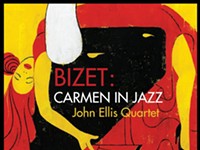
Album Review | 'Bizet: Carmen in Jazz'
Mar 26, 2024 -
'To Swing Is the Thing" by Mike Melito
Aug 10, 2023 - More »

